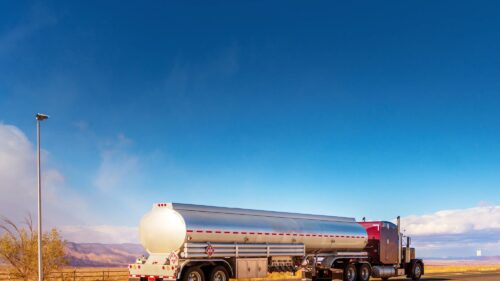According to the latest statistics from the Pipeline and Hazardous Materials Safety Administration (PHMSA), there are over 1.2 million hazardous materials (HM) shipments introduced into transportation every day. This translates into 1.6 billion tons of HM transported annually across all modes. Let me repeat that — 1.6 billion tons!
Add to that the more than 146,000 HM motor carriers registered with the Federal Motor Carrier Safety Administration (FMCSA), and you can guess that even the hint of an accident is a major concern. Crashes coupled with the transportation of HM increase risk exponentially and severely decrease survivability for anyone involved in an accident. Plain and simple — it’s risky business.
As a result, the FMCSA has revised its National HM Program Plan using data to identify specific HM priorities and risks that should be focused on to reduce crashes, injuries, and fatalities on the our nation’s highways.
If you’re a hazmat hauler in the petroleum industry, here is a high-level summary of the top 10 strategies outlined in the 2025 U.S. Department of Transportation FMCSA Safety Memo that could impact you.
- Increased Driver and Vehicle Inspections: Hazmat haulers will face more frequent inspections, focusing on compliance with both vehicle and driver safety regulations, especially in areas with high crash rates.
- Heightened Traffic Enforcement: There will be stronger enforcement of traffic laws targeting unsafe driving behaviors, like speeding or distracted driving, especially for hazmat vehicles.
- Focus on Hazardous Materials Safety: The memo emphasizes increasing safety oversight of hazmat carriers, with a focus on carriers with high out-of-service (OOS) rates and those handling undeclared hazardous materials.
- Work Zone Safety: Hazmat carriers must be prepared for increased inspections and enforcement in or near construction work zones, as these areas have a higher risk of accidents involving large trucks.
- Compliance Reviews and Investigations: FMCSA will conduct more compliance reviews of hazmat haulers, including checks for possession of the necessary hazardous materials safety permits.
- Increased Use of Technology: States are encouraged to adopt advanced technology systems for monitoring and improving carrier safety, which may result in more real-time enforcement actions for hazmat carriers.
- Driver Training and Drug Interdiction: There is a push for more training on drug interdiction and human trafficking during inspections, meaning more thorough scrutiny of hazmat haulers.
- Focus on Cargo Tank Facility Reviews (CTFR): There will be increased oversight of facilities where cargo tanks are repaired and inspected, ensuring that tanks transporting hazardous materials meet safety standards.
- Reduction of CMV Crashes: The memo stresses reducing crashes involving commercial motor vehicles (CMVs), especially hazmat haulers, by targeting high-crash corridors with increased enforcement.
- More Robust Hazardous Materials Safety Plans: Hazmat haulers may need to update or reinforce their safety plans, particularly in light of more stringent state and federal safety audits.
If you’re a hazmat hauler, it boils down to this — the end goal is to keep each of you and all those traveling our highways safe. That said, we know you may have questions. If you’d like to read the memo in full, please click here. The section pertaining to hazmat haulers in the petroleum industry starts on pg. 19.
You can also reach out. We’d be happy to chat with you about all of this to ensure you fully understand the safety goals outlined.






